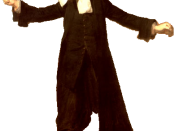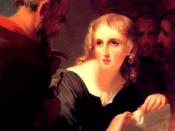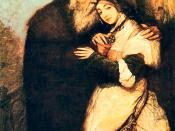The novel "To Kill A Mockingbird" enlightens the responders who perceive that true justice may only be achieved when all prejudice, bias and discrimination is annihilated from the hearts of the people. The Merchant of Venice depicts justice as a notion, which is open to interpretation by the various characters within the plot with different views on justice. The unjust and biased conviction of Eric Volz is portrayed through the article "Volz victim of cultural, political, judicial perfect storm". An innocent man is unjustly accused of killing a young girl. Justice may only be achieved after people combine in the sole purpose of concurring prejudice.
The injustice of Tom Robinson's court case demonstrates that as long as people are swayed and conditioned by prejudice, they will come to unjust decisions and verdicts. Although Atticus Finch deeply exercises egalitarian beliefs, especially in a court of law, the law does not always lead to justice being served.
Racial prejudice in Maycomb society depicts the black and white communities as having been divided by a deep-rooted fear and mistrust. Atticus urges the jury to avoid "the evil assumption - that all Negroes lie, that all Negroes are basically immoral beingsâ¦and are not to be trusted"- repetition of the word "Negroes" accentuating the fact that blacks are no different from white people. Atticus Finch forces the community to face their own prejudice, the deep, ingrained evil assumption that all Negroes are untrustworthy and that a white person's word should always be taken over a black's. Atticus then establishes through a simile the true nature of the assumption, the fact that it " is a lie as black as Tom's skin" and to deliver justice by freeing Tom Robinson. He makes an allusion to Thomas Jefferson stating that he "once said that all...



Wow
Very thorough analysis. I hope to see more work like this from you.
0 out of 0 people found this comment useful.